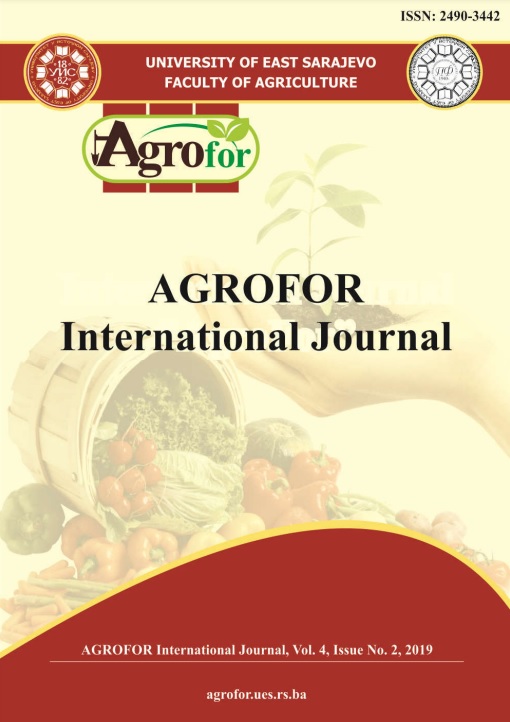ORGANIC CARBON STOCKS IN ARABLE LAND OF REPUBLIC OF SRPSKA - BOSNIA AND HERZEGOVINA
DOI:
https://doi.org/10.7251/AGRENG1902069PAbstract
On the territory of Republic of Srpska (RS – Entity of Bosnia and Herzegovina), in the period 2014 - 2017, the fertility control of arable land was performed in 4125 average samples (taken from top soil, 0 - 30 cm) representing the surface area of 5776 ha. All samples were geo-positioned and linked to the SOTER database (soil and terrain databases). RS is divided into 262 SOTER units. In each soil sample humus was analysed (colorimetric method, wet burning with K2Cr2O7 and conc H2SO4). Soil organic carbon (SOC) was calculated from humus (% humus x factor 0.58). SOC stock (t ha-1) for each plot were calculated on the basis of the volume mass (mg m-3) of the soil type on which the plot was located, the soil weights up to 30 cm (kg ha-1) and the area of the plot (ha). SOC stock on 5776 ha of agricultural land was 225168 t ha-1. The analyzed area was represented by 24 types of soil
(FAO class). The highest average SOC stocks of 130 t ha-1 (based on 31 samples) was found in Calacaric Cambisol and the lowest in Stagnic Luvisol 38 t ha-1 (based on 464 samples). In 84% of the tested samples, representing 89% of researched area, the SOC stocks were less than 57 t ha-1. Estimation of the SOC stocks on the total arable land was prepared by GIS analysis interpolation of the SOC results for 4125 samples on the agricultural land area (arable land, gardens, orchards, vineyards and meadows). Estimated SOC stocks on 578894 ha of arable land were 32833549 t. The result of this research is the first step towards the establishment of SOC monitoring system in RS.

